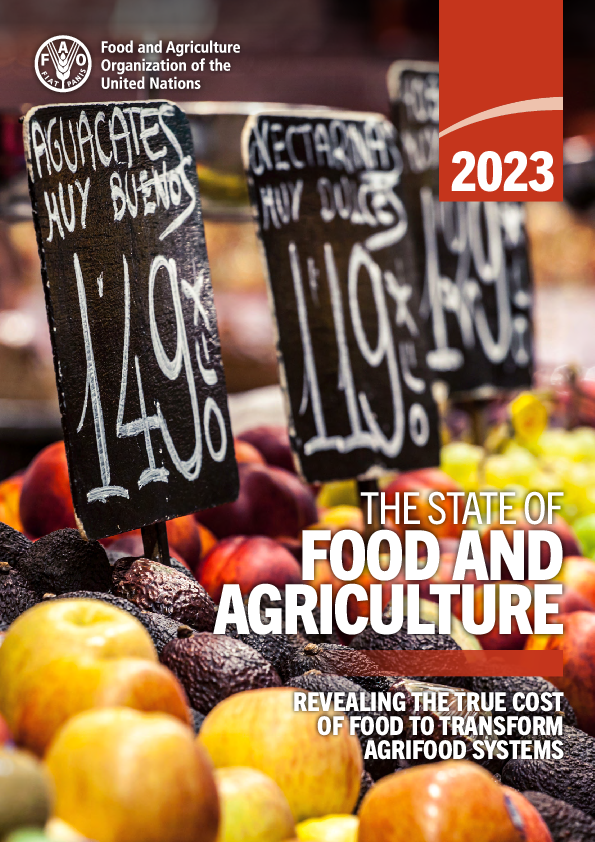 Read this article in French
Read this article in French- Share this article
- Subscribe to our newsletter
The State of Food and Agriculture 2023
The latest edition The State of Food and Agriculture (SOFA), entitled Revealing the true cost of food to transform agrifood systems, introduces the concept of hidden environmental, health and social costs and benefits of agrifood systems, and proposes an approach – true cost accounting (TCA) – to assess them. The report was published the Food and Agriculture Organization of the United Nations (FAO) in November 2023.
Our current agrifood systems impose huge hidden costs on our health, the environment and society, equivalent to at least USD 10 trillion a year. The biggest hidden costs (more than 70 per cent) are driven by unhealthy diets, high in ultra-processed foods, fats and sugars, leading to obesity and non-communicable diseases, and causing labour productivity losses. Such losses are particularly high in high- and upper-middle-income countries.
One fifth of the total costs are environment-related, arising from greenhouse gas and nitrogen emissions, land-use change and water use. This is a problem that affects all countries, and the scale is probably underestimated due to data limitations.
Low-income countries are proportionately the hardest hit by hidden costs of agrifood systems, which represent more than a quarter of their GDP, as opposed to less than 12 per cent in middle-income countries and less than 8 per cent in high-income countries. In low-income countries, hidden costs associated with poverty and undernourishment are most significant.
The report makes the case for more regular and detailed analysis by governments and the private sector of the hidden or ‘true’ costs of agrifood systems via true cost accounting, followed by actions to mitigate these harms.
For the first time ever, FAO will dedicate two consecutive editions of The State of Food and Agriculture to the same theme. This year’s report presents initial estimates, while next year’s will focus on in-depth targeted assessments to identify the best ways to mitigate them. Governments can pull different levers to adjust agrifood systems and drive better outcomes overall. Taxes, subsidies, legislation and regulation are among them.
The report urges governments to use TCA to transform agrifood systems to address the climate crisis, poverty, inequality and food security. It notes that innovations in research and data, as well as investments in data collection and capacity building, will be needed to scale TCA, so that it can inform decision-making in a transparent and consistent way.
(FAO/ile)
More information:
Read more on the FAO website
Download the report on the FAO website





Add a comment
Be the First to Comment